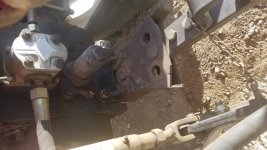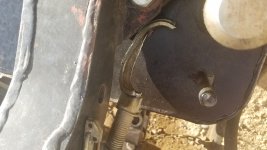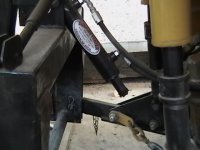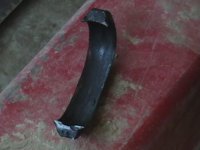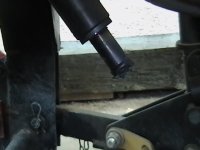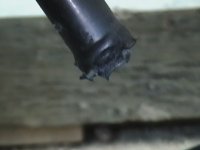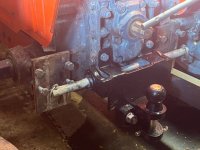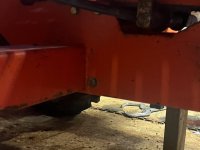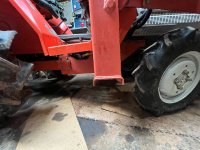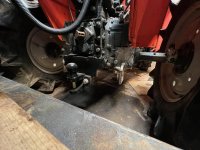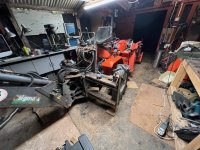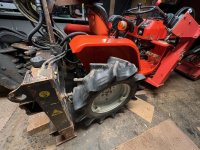Not many tractor owners are willing to go thru the process of making a
custom subframe to mount a backhoe attachment securely to their tractor.
I want to encourage anyonewho is reasonably handy to consider doing
this....it is very rewarding, and you can endup with a TLB setup that
comes close to what you would get if you had a factory-integrated
Tractor-Loader-Backhoe. A custom subframe can be built BETTER than an
add-on subframe from a maker of hoe attachments. More on that later.
I get asked to build a subframe for someone else's tractor now and then. I
never take them up on the offer, but I am happy to show them how I do it.
I have helped some folks long distance, but that is difficult. I want to use
this thread as a go-to place for those considering the fabrication of their
own subframe. In my approach to design and fabrication, I always want to
have both the hoe and the tractor here: measure 3 or 5 times, and cut only
once, hopefully. I have learned a lot about backhoe attachments and
subframes by owning and making them, and by analyzing the many samples
I have seen. I have a large database of hoe attachment specs, but I
am always looking for more data and new ideas.
In this thread, I will show the process I went through to design and fabricate
a subframe to attach a Prairie Dog 7.5 backhoe attachment to a John Deere
4300 tractor. I will use this and other examples of subframes to illustrate
different design approaches. Comments and questions are welcome.
But first, I want to discuss the basics.
What is a subframe? It is a structural member(s) that is rigidly tied
with welds, bolts, or pins to the main structure of the tractor. The
subframe rigidly transmits the forces from the implement to multiple parts
of the tractor's structure. By distributing the forces caused by the
implement, the tractor is protected from excessive concentrated forces, including excessive tension as well as destructive bending moments.
Subframes are used as a superior way to mount a backhoe, instead of
using the Three Point Hitch (TPH). There are many cases where a
Category 1 TPH has been used to successfully mount a backhoe.
There are also numerous documented cases where TPH-mounted hoes
have broken the toplink mounts, or cracked tractors in half. That is
no news to TBN members. Subframe-mounted hoes can also provide a
better integrated tractor with the hoe mounted much closer in to the
rear of the machine. A closer-mounted hoe will increase the minimum
departure angle, which is a fancy way of saying it won't hit the
ground as often when driving through a depression, or onto a trailer. Some
off-the-shelf subframes do not mount the hoe any closer than a TPH mount,
however. A closer-in hoe mount will also improve a tractor's drivability.
If a large weight it mounted far from the center of gravity of a tractor,
it will have what is called a high polar moment of inertia. This inertia
will resist changes in steering input.
In the first photo, I show the parts that comprise a 3PH hoe attachment
mechanism. On the left are the parts that are permanently bolted to the hoe.
The other parts comprise a much stiffer toplink, and brackets to keep the
lower 3PH arms (not shown) from rising. The second and third photos show
the same tractor on the 3PH, and on a Woods subframe, respectively. This
early Woods subframe does not mount the hoe any closer to the tractor
than the 3PH mount does.
Next: subframe types
